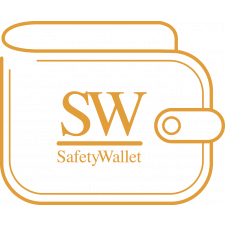Health and Safety Induction Standard Requirements for South Africa
Does your Health and Safety Induction meet the Standard Requirements for South Africa?
Overview
When considering the responsibilities and duties of the employer, one imperative question that employers must ask themselves is: Does your health and safety induction training meet the standard requirements for South Africa?
Health and Safety Management Standards
It is a well-known fact that accidents occur more frequently within the first week after new employees have started with a company. Most accidents also occur when employees perform tasks for which they have no competency.
When operations are busy, it may be too convenient to fix something quickly than following the procedure. This can be eliminated by ensuring that there is an effective health and safety system in place that helps employers take control and reduce risks.
It is a requirement for health and safety inductions to be provided. Every person must receive a site induction at every new site where they work.
Inductions are one of the best ways to provide employees with site-specific health and safety rules, requirements, and information on hazards that they need to be aware of.
Employers must ensure that there is essential health and safety induction training, not only for new staff but for contractors and site visitors as well. There must also be ongoing refresher training provided for other staff to ensure consistent compliance.
A health and safety management system can take the form of either of the following:
- A recognized national standard.
- A sector-specific framework.
- In-house standards, procedures, and/or codes.
These provide the perfect framework for the development of a system. They also help to identify key issues which allow the employer to produce a system suitable for their individual business.
Key points on the health and safety system
The employer carries the responsibility of implementing a health and safety system that must ensure the following:
- That new employees, as well as contractors, attend a health and safety induction before they can start working.
- That all employees and contractors are provided with the relevant information pertaining to risks to their health and safety along with the control measures in place to protect them.
- That neither employees nor contractors undertake activities or tasks until they have attended a specific health and safety induction.
- That employees and contractors are provided with clear and concise instructions and relevant training relating to equipment, machinery, dangerous substances, and transport equipment.
- That no employee performs a task in which they have not been trained and that they are not qualified to do.
- That all employees, contractors, and visitors attend health and safety training according to their needs and duties.
- That health and safety induction records must be signed and dated.
- That all identified training is provided, and that training is kept under review.
What are the system basics for health and safety induction?
- The health and safety policies of the company.
- Specific rules relating to the workplace or site.
- Emergency procedures.
- Relevant risk assessments as well as safe systems of work.
- Job specific information.
- The employee’s responsibilities.
- Personnel, names, and locations of key staff.
- Site maps and/or plans.
- Local area rules as well as instructions.
- Site safety isolation and lock-off points, if applicable.
- Personal protective equipment.
- Asbestos, if applicable.
- Inspection regimes.
- Housekeeping
How to plan the training structure
One of the easiest ways to plan the training structure is to visualize a cycle. The first step in the cycle is to decide whether training is an adequate solution to a certain health and safety issue, followed by identifying the training requirements and setting the objective for the training, which involves looking at the current state of employee knowledge, skill, and attitudes.
Determining the changes that training could achieve along with the training strategy. Here, the organization’s policies pertaining to training, resources, available time, and other considerations must be considered.
This will include decisions on the method of training to meet the specific training needs. The final stages of the cycle involve the implementation of the health and safety system and ensuring that stages are evaluated.
How can SafetyWallet help Employers and Contractors’ Health and Safety Compliance?
SafetyWallet works to ensure that its subscribers are supported and assisted in all matters relating to health and safety, and through a partnership with MAKROSAFE and OHS Online, subscribers can ensure that they are a part of creating a safer, healthier, and more compliant working environment.
Click on the image below to find a SafetyWallet Solution that suits your business (Branch/Site specific) and get the 21 benefits along with the subscription:
To find out how you can ensure employer and contractor’s Health and Safety compliance, Contact Us.

-Does-your-Health-and-Safety-Induction-meet-the-Standard-Requirements-for-South-Africa-Banner-1.jpg)
Comments (1)
One of the easiest ways to plan the training structure is to visualize a cycle.
2022-10-06 13:33:58